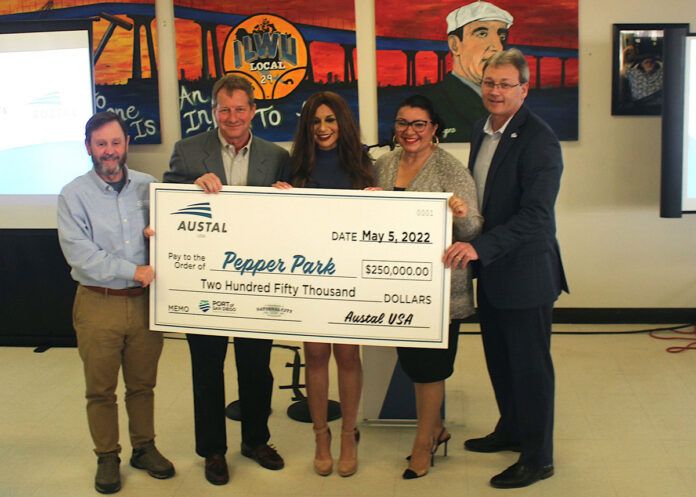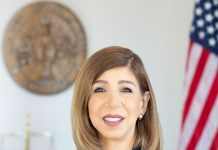
The most recent Pepper Park redesign plan was unveiled at a May 5 Port of San Diego workshop where community members spent $2.5 million in fake money to indicate how they would distribute funding to build an ideal park.
Shipbuilding company Austal USA formally donated $250,000 for the park expansion and redesign at the meeting, on top of the $3.85 million in American Rescue Plan Act funding already dedicated by the port for the project.
“This design workshop is the latest of several outreach events in English, Spanish and Tagalog presented digitally and in-person. Together, we’ve collected responses and feedback and today, we’ll see what we have to offer the community,” National City Mayor Sotelo-Solis said.
KTUA Associate Jacob Leon said the design firm had incorporated feedback into the three original concept plans for the park into one hybrid plan with the most-liked ideas: “lots of art, play areas for kids” and a focus on the community.
Flexible use spaces like a picnic area that can be used as a stage, grassy fields that can be sectioned off for events or left open for community use and decks extending out over the water are all included in the hybrid design. Leon noted more space was gleaned for the park itself by reducing the current parking lot down to a smaller section of land while reconfiguring the painted lines to accommodate more parking.
Physical structures were also designed with use and reuse in mind such as retired shipping containers that symbolically represent the port given new life as a hub for food vendors.
Some items were also crossed off the list including anything that required too much water or might not be utilized by the community. At the port’s request, designers also provided alternate versions of the hybrid plan that included a wellness center in one design and left the big-ticket item out in another design.
“This is not final but we think the park could work like this,” Leon said.
After the meeting, National City Port Commissioner Sandy Naranjo said it is important to include the community’s ideas and planners made sure to remove potential barriers against participation by providing free childcare, light refreshments because the workshop took place during dinner time, translators and clear signage indicating where the meeting was being held.
“The design of National City has really played a detrimental role in the community,” Naranjo said in a passionate voice.
A report on childhood obesity, she said, indicated National City schoolchildren had the highest obesity rate in San Diego county while Coronado, “which is just across the bay” had one of the lowest.
Last Thursday’s meeting was “a significant milestone in the struggle for environmental justice,” Naranjo said, as the park represents an opportunity to correct past ills.











